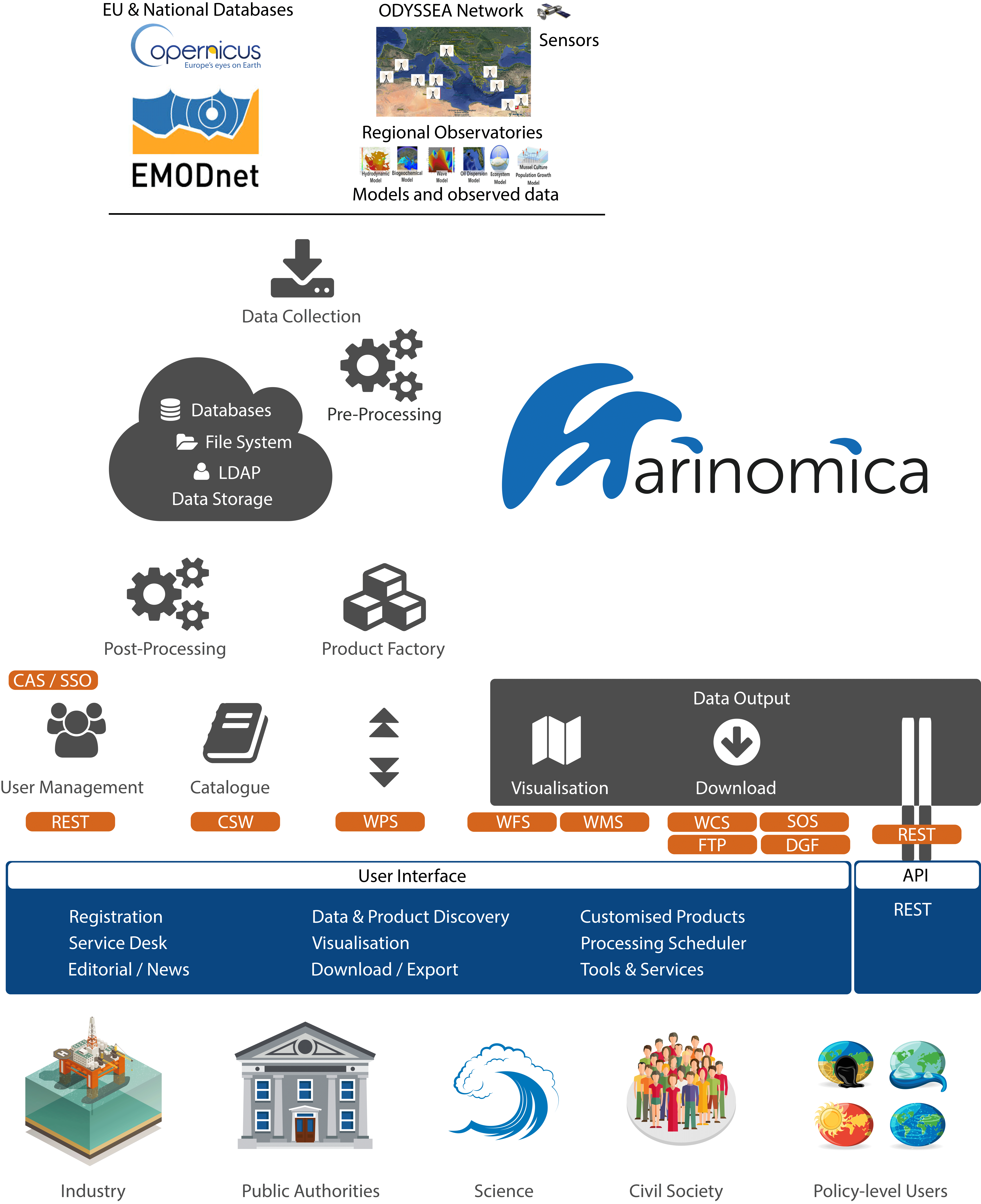Marinomica – the EU-funded ODYSSEA project’s key deliverable – is now in operation, and will be launched for public use in late 2020, said ODYSSEA coordinator Prof. Georgios Sylaios of the Democritus University of Thrace in the recent ODYSSEA newsletter.
“Several stakeholders and end-users across the Mediterranean have tested Marinomica to obtain easy access to marine data and have provided their feedback through the online survey,” Sylaios noted.
Operation is being carried out through the recently purchased Collect Localisation Satellites (CLS) data centrein Toulouse, which is capable of providing services through Marinomica to a multitude of users entering the system simultaneously, Sylaios explained.
As it was constructed based on the novel KuberneteS framework, Marinomica can now be scaled and potentially transferred to any cloud system, placing it at the cutting edge of technological developments. Marinomica can then be uploaded onto the emerging EU-funded Data and Information Access Services (DIAS) cloud system with minimum adaptations and maximum efficiency, once DIAS is ready to host external platforms.
The increased performance of the improved Sensor Observation Service (SOS) server has facilitated collection and ingestion of in-situ data into Marinomica. Data from ODYSSEA’s marine gliders, for example, will soon be collected in real time (a first) and automatically transferred to Marinomica, ready to be downloaded and visualised by users.

Similarly, the interface developed by the ODYSSEA consortium for integrating algorithms, which will significantly reduce the time required to integrate new algorithms to Marinomica and run them “on the fly”, has been completed and is now operational, Sylaios noted.
Developing and operating Marinomica online to provide access to observatory data, products and series for users across the Mediterranean basin is one of the ODYSSEA project’s primary objectives. Marinomica follows on the creation of ODYSSEA’s network of observatories and deployment of in-situ marine sensors; the development and coupling of new oceanographic models; and the integration of the total network with existing data and models relevant to the Mediterranean.
ODYSSEA is also actively pursuing its third primary objective, to build capacity and develop skills to maintain the ODYSSEA observatories and their infrastructure, create and facilitate business opportunities, and disseminate and transfer relevant knowledge across the Mediterranean.

